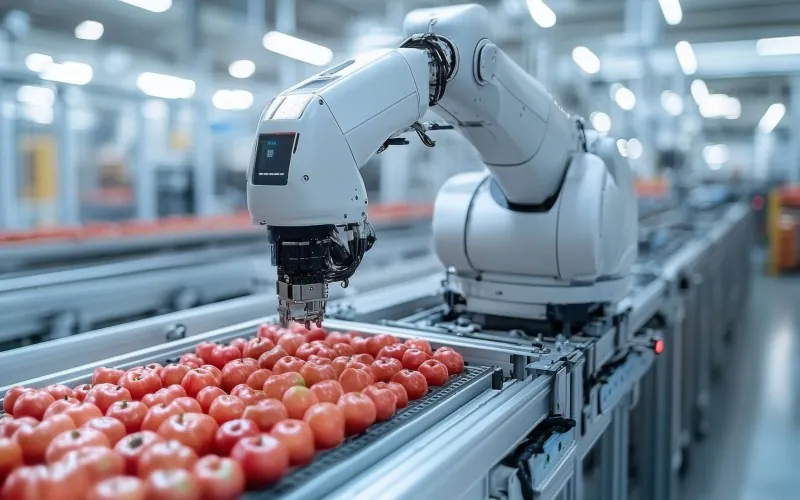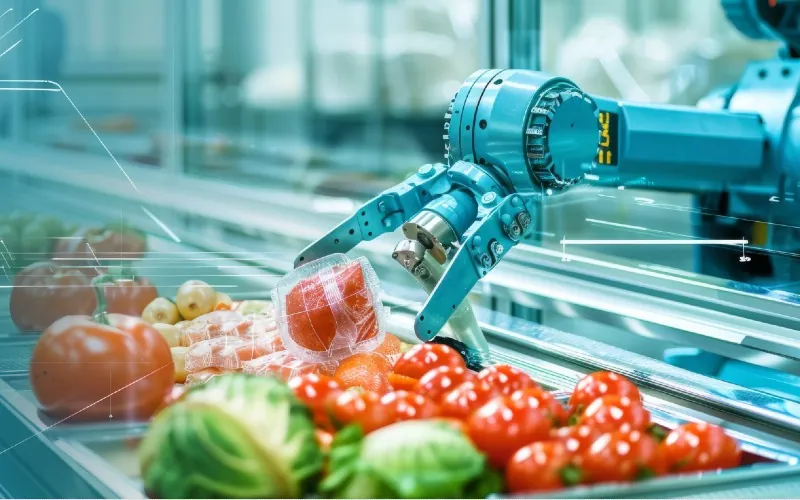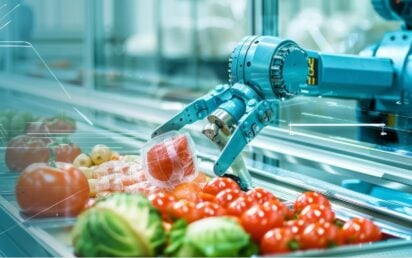Adapting to technology is no longer a mere option—it’s essential for survival in the competitive food industry. The rapid pace of innovation means food companies must stay ahead to meet consumer expectations for convenience and transparency while ensuring compliance with industry regulations.
The demand for faster service and seamless operations is higher than ever, and technology plays a crucial role in achieving that. Without it, food companies risk losing market share, damaging their reputation, and facing operational inefficiencies.
Read on to discover how digital transformation can help your food business stay competitive and thrive in this fast-evolving landscape.
Optimize Production Through Automation
Production efficiency often breaks down at the task level. Manual logs, disconnected machines, and paper-based tracking slow things down and increase the chances of mistakes. Automation reduces these risks and helps food companies run more smoothly.
To start, look for tasks that repeat every day. For example, packaging, sorting, and labeling are typically easy to automate. Machines can handle them with consistent speed and fewer errors. As a result, you reduce delays and improve output.
Next, consider quality control. Automated systems can check weights, inspect items visually, and monitor measurements with greater precision. This improves consistency across batches and supports better product standards.
You can also automate compliance tracking. Temperature checks, storage logs, and ingredient documentation are easier to manage through digital tools. This reduces paperwork, lowers error rates, and simplifies reporting during audits.
In addition, connecting machines to a central system gives you more control. You can monitor performance, identify slowdowns, and plan maintenance before issues cause downtime. This leads to smoother operations and more predictable output.
If you’re unsure where to begin, consider working with an IT partner that understands food technologies. They can help match automation tools to your production needs without overcomplicating the process.
Strengthen Data Use Across Departments
Once your core operations are running efficiently, the next step is making better use of the data you already have. While food companies collect a large amount of information daily, much of it gets locked into separate systems or teams—limiting its impact on decision-making.
Start by shifting to a centralized platform that combines data from departments like production, sales, customer service, and logistics. This helps you view your operations as a whole rather than in pieces. With everything in one place, you can connect trends and act sooner.
For example, if customer service sees a drop in satisfaction scores, that data can be linked to production logs to check for quality issues or changes in raw materials. Similarly, sales patterns can inform inventory decisions—helping you adjust restocking schedules based on actual demand instead of guesswork.
Another benefit of shared data is smoother collaboration between teams. When everyone works from the same source of truth, there’s less confusion and fewer delays in communication. Just as important is protecting data across these shared platforms—especially when sensitive customer, supplier, or operational information is involved. Taking steps to secure access and maintain data integrity strengthens trust and supports more confident decision-making.

Improve Your Digital Presence
A strong digital presence is more than a modern-looking website. It’s about how you reach customers, engage partners, and present your brand. Many food companies focus heavily on production and overlook this part of the business.
Start with your website. Make sure it loads quickly, works on mobile, and clearly explains what you offer. Add forms for inquiries or ordering and include product information that’s easy to understand.
Next, turn to platforms your customers actually use. If you sell to distributors or retailers, LinkedIn might be your best bet. For direct-to-consumer operations, consider Instagram or online marketplaces. Make sure your content is current, helpful, and aligned with what customers care about.
Email remains one of the most effective tools. Use it to send product updates, share seasonal offerings, or follow up on orders. When you integrate email with customer data, you can tailor your messages and improve engagement.
Strengthen Supplier and Logistics Integration
Breakdowns in coordination between suppliers and logistics partners often cause delays that ripple through production and delivery. Tightening this connection can reduce disruptions and help you fulfill orders more reliably.
One effective approach is to provide suppliers and logistics providers – such as refrigerated vans – with access to a shared dashboard. With real-time updates in one place, everyone stays on the same page, which cuts down on calls and emails for status checks.
Agreeing on clear packaging and labeling standards also streamlines the process. When materials arrive exactly as expected, your team can move faster and avoid extra steps like relabeling or repacking.
Replacing manual ordering methods with digital systems further reduces data entry mistakes, speeds up confirmations, and ensures a consistent record of every transaction.
Whenever possible, choose partners that already use platforms compatible with yours. This limits the need for workarounds and simplifies how you exchange information day to day.
Final Thoughts
Staying ahead means more than adopting the latest tool—it’s about making practical upgrades that improve how you operate and serve your customers. Automating production, using data consistently, building a digital presence, and integrating with suppliers aren’t optional anymore. They’re the difference between falling behind and leading the pack.


